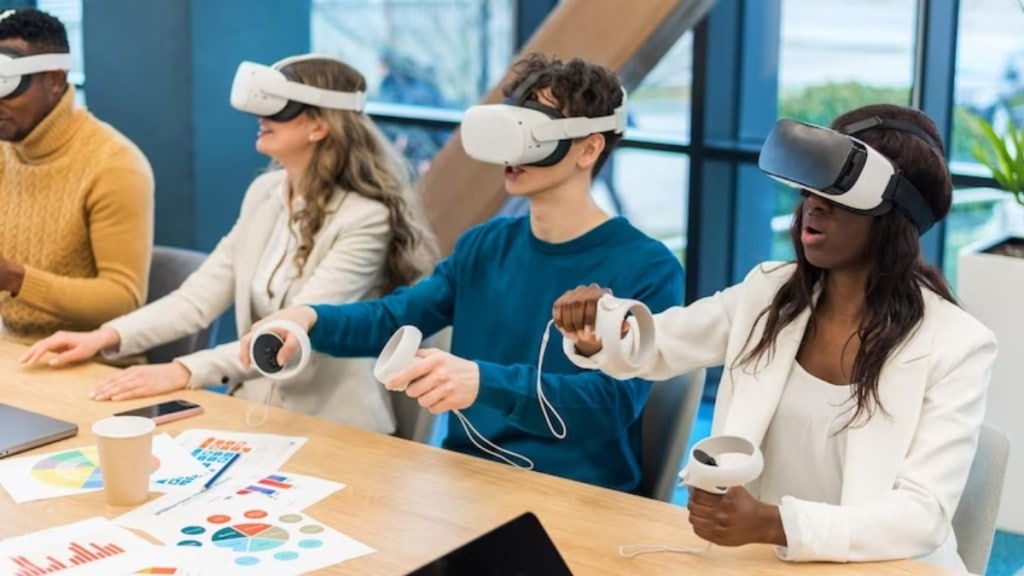By Abhijit Patil
In the realm of education, technological advancements have ushered in a new era of immersive learning experiences, where the boundaries between the physical and digital worlds are becoming increasingly blurred. Among these innovations, Virtual Reality (VR) and Augmented Reality (AR) stand out as transformative tools with the potential to revolutionize the way students learn and comprehend complex concepts.
As we navigate the vast landscape of educational methodologies, VR and AR offer an unprecedented avenue for experiential learning. Imagine a biology class where students don VR headsets and delve inside a human cell, exploring its intricate structures and functions in three-dimensional space. Such immersive experiences not only captivate students’ attention but also deepen their understanding through hands-on exploration that textbooks alone cannot provide.
One of the key advantages of VR and AR in education lies in their ability to create simulations that mimic real-world scenarios. From historical events to scientific experiments, these technologies enable students to step into various environments, fostering a sense of presence and engagement that significantly enhances retention and comprehension. For instance, history lessons can be transformed as students virtually walk through ancient civilizations, witnessing pivotal moments first-hand.
Furthermore, these technologies cater to diverse learning styles, accommodating visual, auditory, and kinaesthetic learners alike. Through interactive simulations and customizable learning modules, educators can tailor experiences to suit individual student needs, thereby promoting inclusivity and a deeper grasp of the subject matter.
Collaborative learning, another cornerstone of modern education, finds a new dimension with VR and AR. Students can engage in group projects or problem-solving activities regardless of their physical locations, fostering teamwork and communication skills essential in today’s interconnected world. Moreover, educators can track and assess students’ progress more effectively by analyzing their interactions within these immersive environments.
While the potential of VR and AR in education is vast, challenges exist in their widespread implementation. Cost barriers, technological limitations, and the need for specialized training for educators are hurdles that need addressing. However, as these technologies continue to evolve and become more accessible, the benefits they offer undoubtedly outweigh the initial challenges.
In the pursuit of leveraging VR and AR effectively, it’s crucial to emphasize their integration as complementary tools rather than replacements for traditional teaching methods. These technologies should augment classroom experiences, enhancing learning rather than overshadowing the importance of foundational education.
I have witnessed first-hand the impact these technologies can have on education. However, it’s imperative to approach their integration thoughtfully, ensuring that pedagogical goals remain at the forefront. Collaboration between educators, technologists, and content creators is key to harnessing the full potential of VR and AR in education.
In conclusion, the integration of Virtual Reality and Augmented Reality in education represents a paradigm shift in the way knowledge is imparted and absorbed. These immersive technologies offer a gateway to a world where learning transcends the confines of traditional methods, fostering curiosity, engagement, and deeper understanding among students. As we continue to embrace innovation in education, the judicious integration of VR and AR holds the promise of shaping a more dynamic and effective learning landscape for generations to come.
The author is COO of Ajna Lens. Views are personal.

